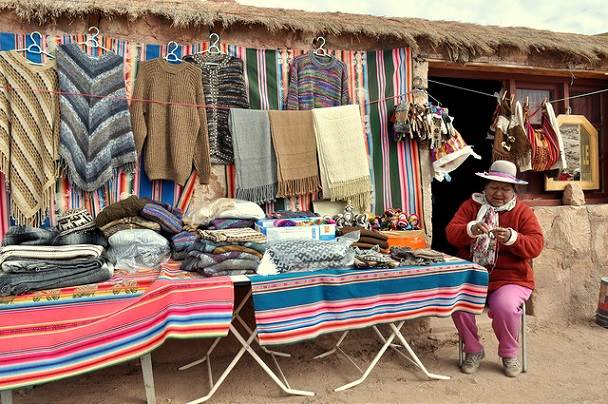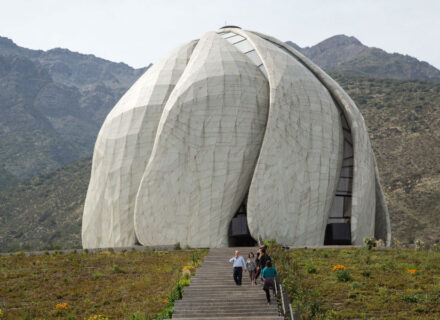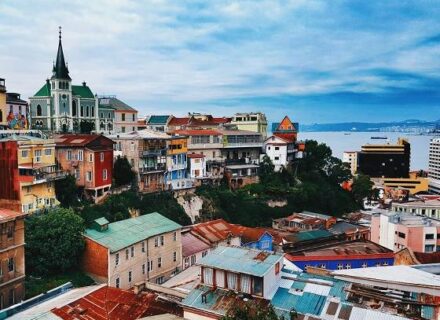|
North (1):
From Arica to the Loa river
Alpaca knitting
The village of Lirima, 84 miles from Huara, was founded just ten years ago by an aymara group of natives who wanted to keep their traditions. It is famous for their knitting, especially the alpaca—wool carpets. Other villages nearby, like Isluga and Enguelga, use camelido wool for their work.
Atacama Zone. Handcrafts made out of wool and cactus wood
Towns inside Calama (Caspana, Toconce, Aiquina, San Pedro de Atacama) have artisans and local organizations that work with llama and alpaca wool, and wood taken from cactus plants.

Stone handcraft
In Toconce, Toconao and San Pedro de Atacama, artisans produce and sell handcrafts made in a stone known as “liparita” (or “vulcanita”), from nearby pits. The most traditional figures are those of the Toconao church, which is 3 miles distant, near the Jerez brook.
Norte chico. Sheep wool
At the village of Chapilca, 21 miles from Vicuña, there is a textile tradition work on sheep wool, according to ancient techniques of knitting and coloring.
Salala handcraft
20 miles from Ovalle, in a place known as Barraza Bajo, one finds typical handcrafts made in clay.
The combarbalita stone
The village of Combarbalá, 82 miles from Los Vilos, is the production center of a typical handcraft worked on a stone known as “combarbalita”, which was declared one of Chile’s National Stones. It is completely unique, and presents veins of different colors.
North (2):
Aconcagua and Maipo basins
Leather handcraft and pottery
Both are typical of the Quilimarí Valley, especially a town called Guangualí.
La Ligua knittings
There are famous artisan and industrial knitted fabrics, all made in thread from La Ligua and nearby villages. 24 miles from La Ligua, one finds the Huaquén Villa, where one can appreciate the work of artisans in the making of carpets, tablecloths, etc. Valle Hermoso is close to the mountains, and there one finds several factories that produce typical wool knittings.
Embroidery
At the seaside town of Cachagua, one finds embroideries for tablecloths, napkins, sheets, etc.
Curimón crockery
4 miles from San Felipe, the town of Curimón is known for its interesting work in crockery.
Casablanca Valley crockery
The city and valley of Casablanca is surrounded by hills. It is here one finds works in crockery. Besides the religous interest, the Sanctuary of Lo Vásquez attracts people from all over the country for the fine work done there on crockery.
El Totoral’s wool knittings
This is a rural town of colonial origin, 13 miles from Algarrobo. Here, one finds wool knitted fabrics.
Hand threading
It is part of the peasent tradition of Cuncumén.
Talagante ceramics
25 miles south of Santiago, the town of Talagante offers visitors guided tours throughout the workshops of artisans that develop a colorful type of ceramics, with rural and religious imagery. All the tours include lunch and typical food.
Cloths and knittings
18 miles south of Santiago, at the town of Malloco, one finds beautiful textile handcrafts at “Sucampo”, presented by the owners themselves.
Central Valley
Clay
Plates, bowls and other kitchen supplies made out of clay can be found at the town of Natividad.
Wool and thread
By the town of Litueche, the handcraf center of Las Damas sells sheep and alpaca wool knittings, all made by the zone’s people.
Chamantos of Doñihue
14 miles south of Rengo, the area of Doñihue —specifically, Camarico— produce several wool pieces, such as “ponchos” and caps, all in home workrooms.
Color ceramics
3 miles from Peralillo, the town of Lihueimo produces clay objects for decoration, with a technique and designs similar to those of Pomaire.
Grapevine knives
Are made in Peralillo, 14 miles from Santa Cruz.
Wool and thread handcraft
Carpets and hats are made out of natural straw, in Marchihue, 26 miles from Pichilemu.
Clay jars
At Malloa, 6 miles from Rengo.
Chilean saddles
By San Vicente de Tagua-Tagua, in Rinconada de Tambo. All what’s needed for horseback-riders.
Corn leaves
In Pichidegua, a kind of handcraft now almost extinct, based on corn leaves.
Pottery
At the typical town of Coinco, objects made out of clay, similar to those of Pomaire, and sold by the artisans at their own homes.
Totihue tapestry
Traditional embroideries with typical motifs, sold at the City Hall.
Curahuilla brooms
Made by artisan Luis Nuñez, who solds them at his own house.
Pelequén handcraft
Small stores and workshops offer sculptures made on wood, and handcrafts that uses their typical pink stone.
Lipimávida knittings
8 miles from Vichuquen, the town of Lipimávida has handcrafts, pottery and knittings.
Leather in Lolol
Juan Becerra has his workshop near the central square. He makes belts on high-quality leather.
Pumanque blankets
15 miles from Lolol, sold at the artisans’ houses.
Chimbarongo wickework
A town known nationwide for their work on wicker, sold right at the side of the main highway.
Straw from La Lajuela
Baskets, hats and bags.
Clay in Unihue
Just minutes away from the city of Talca, clay objects are sold at the Artisans’ Center.
San Clemente leather
At the colonial town of San Clemente, 12 miles from Talca, work in leather for horseback riders.
Rari horsehair
Rari, a town famous for their production of little figures made out of animal hair and colourful vegetal threads, sold by the artisans at their own homes.
Pilén Clay
High-quality, and made only with ancient tools, 12 miles away from Cauquenes. These pieces are both useful and decorative.
Wood handcraft
At the town of Vara Gruesa. Objects made with wood from oaks, orange, walnut and pear trees.
South (1):
Bio Bio and Araucanía Regions
Quinchamalí pottery
South of Chillán, the town of Quinchamalí is famous for its black clay and white drawing pottery.
Woods, wickerwork and loom knittings
At the street that gets to Coihueco, 20 miles from Chillán, one finds objects carved on wood, all locally-made. Nearby, at the frontier town of Minas del Prado, native women make blankets, carpets and other knitting clothes in rustic wool looms. In Roblería, 40 families work on the production of objects made out of wicker.
Straw handcraft
Hats and sackcloths decorated with wool are handmade in the rural towns of Hualte, Pangue, Reloca, Quirao, Coyanco, San José and Quitripín, 31 miles away from Chillán.
Ancient pottery
Close to Arauco, one can find pottery made according to an ancient tradition, all fine and high-quality, decorated with blue, green and orange lines.
Los Lagos Region. A mapuche workshop in Rucatraro
At the “Ruka Taller”, in Rucatraro, one finds all kinds of typical mapuche handcrafts.
Mapuche knittings in Temuco and Villarrica
In the city of Temuco, the same as in fairs of Pucón and Villarica, one finds typical knittings made of sheep wool, all fabricated according to ancient mapuche techniques. One can find bed covers, ponchos, handbags.
Mapuche knittings of General López
A group of mapuche women from the community of General López, knit handbags, sashes and other products, all in tinted sheep wool.
Huitralfe Millaray workshop
In the town of Los Boldos, southeast of Nueva Imperial, one finds the handcraft workshop of Huitrafe Millaray, where there are made knittings with sheep wool, all tinted with vegetal fibers.
Villarrica woods
In between Villarica and Pucón, in an area known as Hualapulli, there is the Kinewen workshop, with several furniture pieces made out of native woods. Nearby, in Licán Ray, one finds the Coñaripe handcrafts, all in painted wood. On the road to the Villarica volcano, there are several carving workshops that use native woods.
Quelhue knittings
At the border of the Villarica lake, 3 miles from Pucón, there is a mapuche community where women knit and sell all kinds of wool products.
South (2):
Chiloé and the Patagonia
The Dalcahue Fair
It is located on the coastal road of Dalcahue, 12 miles from Castro, open every Thursday and Sunday. Objects made out of straw, wood and wool. Along with Quellón’s, it is the only fair with direct selling to the public.
Castro open-market
Fruit, vegetables and other food products, but also handcrafts made out of wood, stone and wool.
Puerto Ibáñez pottery
72 miles from Coyhaique, decorative pottery, sometimes covered on leather. Contact info: Marta Aguila, (56-67) 230 719.
|




